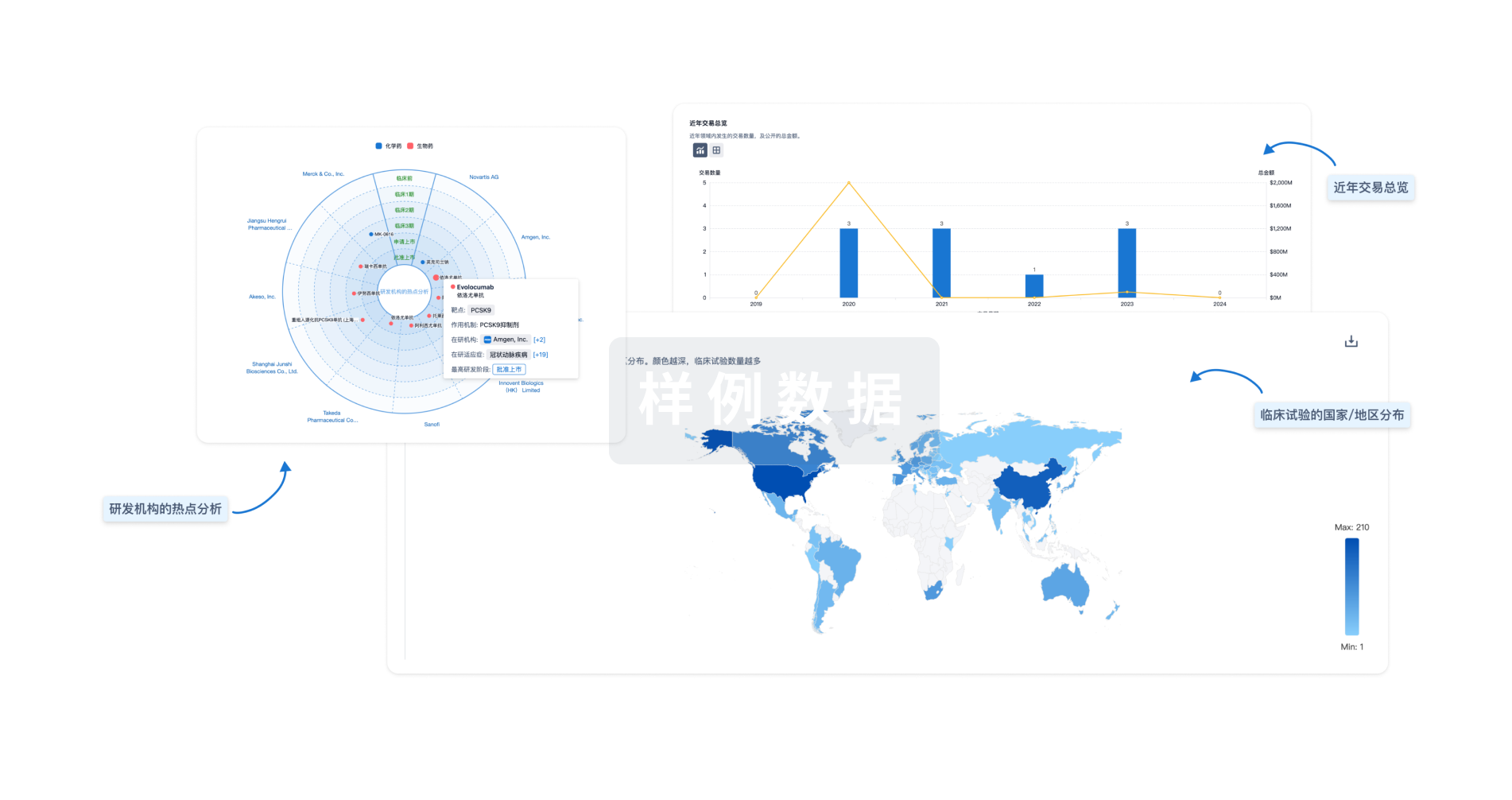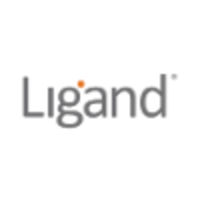预约演示
更新于:2025-05-07
FBP1
更新于:2025-05-07
基本信息
别名 D-fructose-1,6-bisphosphate 1-phosphohydrolase 1、FBP、FBP1 + [5] |
简介 Catalyzes the hydrolysis of fructose 1,6-bisphosphate to fructose 6-phosphate in the presence of divalent cations, acting as a rate-limiting enzyme in gluconeogenesis. Plays a role in regulating glucose sensing and insulin secretion of pancreatic beta-cells. Appears to modulate glycerol gluconeogenesis in liver. Important regulator of appetite and adiposity; increased expression of the protein in liver after nutrient excess increases circulating satiety hormones and reduces appetite-stimulating neuropeptides and thus seems to provide a feedback mechanism to limit weight gain. |
关联
2
项与 FBP1 相关的药物靶点 |
作用机制 FBP1 调节剂 |
在研机构- |
在研适应症- |
非在研适应症 |
最高研发阶段终止 |
首次获批国家/地区- |
首次获批日期1800-01-20 |
靶点 |
作用机制 FBP1抑制剂 |
在研机构- |
在研适应症- |
非在研适应症 |
最高研发阶段无进展 |
首次获批国家/地区- |
首次获批日期1800-01-20 |
2
项与 FBP1 相关的临床试验NCT00458016
A Phase 2, 28-day, Multicenter, Double-Blind,Randomized, Placebo-Controlled Study to Assess the Safety, Tolerability and Efficacy of MB07803 in Patients With Type 2 Diabetes Mellitus
The purpose of this study is to collect important information regarding the safety, tolerability, and efficacy of MB07803 when administered for 28 days in patients with type 2 diabetes mellitus
开始日期2007-03-01 |
申办/合作机构 |
NCT00290940
A Multicenter, Randomized, Double-Blind, Placebo-Controlled Study of the Safety and Efficacy of CS-917 as Monotherapy for Type 2 Diabetes
This study will compare glucose lowering with CS-917 compared to placebo after 3 months of treatment
开始日期2006-01-01 |
申办/合作机构 |
100 项与 FBP1 相关的临床结果
登录后查看更多信息
100 项与 FBP1 相关的转化医学
登录后查看更多信息
0 项与 FBP1 相关的专利(医药)
登录后查看更多信息
2,531
项与 FBP1 相关的文献(医药)2025-05-01·International Journal of Biological Macromolecules
Brassinosteroid-induced S-nitrosylation of fructose-1,6-bisphosphate aldolase increased ATP synthesis under low temperatures in mini Chinese cabbage seedlings
Article
作者: Gao, Xueqin ; Yu, Jihua ; Wang, Guangzheng ; Tie, Jianzhong ; Hu, Linli ; Lyu, Jian ; Yang, Jiaojiao ; Yang, Xin
2025-04-01·Journal of Cellular and Molecular Medicine
Vanillin Enhances Photobiomodulation Wound Healing by Modulating Glyco‐Oxidative Stress and Glucose Dysmetabolism in Diabetic Wounded Fibroblast Cells
Article
作者: Houreld, Nicolette N. ; Erukainure, Ochuko L.
2025-04-01·Plant Physiology and Biochemistry
Proteomic and physiological analyses reveal the mechanisms through which melatonin ameliorates heat stress-induced photoinhibition in Nicotiana tabacum
Article
作者: Liu, Shuai ; Li, Jun ; Liu, Yang ; Song, Wenjing ; Zhang, Yu ; Song, Xiliang ; Wang, Yi
14
项与 FBP1 相关的新闻(医药)2025-01-07
·医药速览
在代谢相关脂肪性肝病(MAFLD)/代谢相关脂肪性肝炎(MASH)的晚期,肝脏损伤、炎症、纤维化和肝细胞癌(HCC)风险增加。尽管MASH能够触发p53依赖的肝细胞衰老——一种抑制肿瘤形成的机制,但这种状态也同时增加了HCC的风险。这引发了一个重要问题:MASH是如何在触发细胞衰老的同时增加肝癌风险的?
为了解答这一问题,2025年1月1日,来自四川大学古丽教授、重庆大学朱亚辉教授与美国加州大学圣地亚哥分校药理学和病理学系特聘教授、MedComm - Future Medicine期刊主编Michael Karin教授领导的联合科研团队在Nature上发表了题为“FBP1 controls liver cancer evolution from senescent MASH hepatocytes”(FBP1控制肝癌从衰老的MASH肝细胞中演变)的研究论文,该研究发现糖异生酶果糖-1,6-二磷酸酶1(FBP1)是p53的靶标,在衰老样MASH肝细胞中升高,但在大多数人类HCC中通过启动子超甲基化和蛋白酶体降解抑制,为我们理解这一过程提供了新的视角。
https://www.nature.com/articles/s41586-024-08317-9
在HCC中,FBP1和p53的表达显著下调
首先,研究人员通过免疫组化分析发现,在HCC中,FBP1和p53的表达显著下调(图1)。FBP1是一种参与糖异生的酶,它在正常情况下能够抑制肿瘤的发生。研究发现,在83例HCC样本中,有71%的样本FBP1表达降低,这与ALDOB的丢失、AKT的激活、MDM2 Ser166位点的磷酸化以及p53、p21CIP1和p16INK4a的下调密切相关。此外,临床蛋白质组肿瘤分析联盟(CPTAC)和PXD006512早期HCC蛋白质组数据库也显示,FBP1和ALDOB在HCC中普遍下调,且低FBP1与低p21CIP1和p16INK4a之间存在强相关性。
图1. p53依赖性、FBP1下调和启动子
研究人员进一步探讨了FBP1下调的原因,发现虽然体细胞FBP1突变较为罕见(<1%的HCC病例),但在62.8%的HCC中,FBP1的启动子区域发生了甲基化,而其他糖异生基因(如PCK1和G6PC)以及TP53并未发生类似变化。甲基化组分析显示,与肝细胞核相比,HCC核中的FBP1启动子区域存在超甲基化,而TP53启动子的甲基化状态未发生改变。通过染色质免疫沉淀(ChIP)实验,研究人员确认了FBP1启动子的甲基化,并发现5-氮杂胞苷处理可以逆转这种甲基化,从而增加FBP1 mRNA的表达。
在MASH模型中,研究人员发现FBP1和p53的上调能够抑制HCC的发展。当给易患MASH的小鼠喂食高果糖饮食(HFrD)时,会诱导p53、p21CIP1、p16INK4a和FBP1的表达,并抑制AKT的激活。这些蛋白质在HFrD开始后的第32周达到峰值,随后逐渐下降,而NRF2的表达则呈现出相反的趋势。到了第22周,肝细胞的DNA损伤和DNA损伤响应(DDR)介质,如磷酸化的γH2AX(P-γH2AX)、53BP1、P-ATR和P-CHK1等水平上升,同时P-RPA2(提示复制叉停滞)和与衰老相关的β-半乳糖苷酶(SA-β-gal)也升高。HFrD喂养还诱导了早期的肿瘤性病变,可能包含肝癌前体细胞(HcPCs),其中多泛素化蛋白聚集体和自噬伴侣蛋白p62的积累表明自噬受到干扰,NRF2(NQO1)、CD44和MYC被激活,而p53和FBP1则被下调。在肝细胞中敲除FBP1会激活NRF2和AKT,下调p53、p21CIP1和p16INK4a,并改变肝脏的形态。
FBP1缺失通过AKT促进肿瘤发生
为了探究FBP1缺失如何促进肝脏肿瘤的发生,研究人员采用水动力尾静脉注射(HTVI)方法,将致癌基因NRASG12V与Sleeping Beauty转座子一起注入小鼠体内。结果发现,在FBP1基因完整的小鼠中,NRASG12V的致癌能力相对较弱,但在FBP1被敲除的小鼠中,可迅速诱导出轻度纤维化的HCC,这些肿瘤细胞表面标记物包括α-胎蛋白(AFP)、CD44和MYC。注射NRASG12V的FBP1缺失小鼠在20周内死亡(图2)。
进一步研究发现,NRASG12V仅在FBP1缺失的小鼠肝脏中激活了AKT信号通路,同时抑制了GSK3β Ser9位点的磷酸化,导致GSK3β的底物NRF2积累,以及MDM2 Ser166位点的磷酸化。与NRF2的激活一致,p53和p21的表达被下调。AKT的激活在HTVI后1周内显现,伴随着NQO1的诱导、MDM2的磷酸化以及核内p53、p21CIP1和p16INK4a的减少,而Ki-67的表达在4周后上升。与非肿瘤组织相比,HCC中磷酸化的AKT、GSK3β和NRF2水平更高。此外,敲除肝细胞中的Trp53也支持了NRASG12V诱导的快速HCC发生,同时下调了FBP1并增强了AKT和NRF2的激活。
图2. FBP1或p53缺失和AKT激活导致NRASG12V肿瘤发生
FBP1与NRF2之间存在相互制约
研究人员还发现,FBP1与NRF2之间存在相互制约的相互作用。FBP1的缺失会激活NRF2,而NRF2的激活又会进一步抑制FBP1的表达(图3),形成一个循环。这种相互作用在HCC的发生和发展中起着关键作用。
图3. NRF2诱导的FBP1降解可缓解衰老,从而促进肿瘤发生
该研究为开发针对肝癌的新型治疗策略提供了潜在靶点
研究人员总结到,在MASH向HCC转变的过程中,FBP1的表达受到抑制,FBP1的缺失会激活AKT信号通路,进而促进细胞增殖和代谢重编程,为肿瘤的发生提供了有利条件。与此同时,NRF2作为一种转录因子,通常在细胞应激反应中发挥保护作用。但在MASH向HCC转变的过程中,NRF2的活性被异常激活。NRF2的激活不仅能够促进FBP1的降解,还能够通过调控一系列下游基因的表达,进一步增强细胞的增殖能力和抗氧化能力,从而推动肿瘤的发生和发展。尽管肝细胞衰老在MASH的早期阶段可能有助于抑制肿瘤的发生,但在晚期阶段,衰老细胞可能会通过分泌一些促炎因子和生长因子,为肿瘤的生长创造适宜的微环境。
这些发现为我们理解MASH向HCC转变的分子机制提供了新视角,并为开发新的治疗策略提供了潜在的靶点。通过调节FBP1和NRF2的表达,或许可以有效阻止MASH向HCC的进展,为肝癌的预防和治疗提供新的思路。
参考文献
1.Gu L, et al. FBP1 controls liver cancer evolution from senescent MASH hepatocytes. Nature. 2025 Jan 1. doi: 10.1038/s41586-024-08317-9.
MedComm系列期刊介绍
MedComm-Future Medicine是由Wiley出版的开放获取期刊。MedComm(2023 lF 10.7) 姐妹刊。期刊相关主题包括但不限于:遗传学、生物信息学、深度学习、干细胞、类器官等;关注人类主要疾病,包括但不限于:癌症、心血管疾病、自身免疫疾病和神经系统疾病等。
主编由伦敦国王学院Robin Ali教授,加州大学Michael Karin教授,和澳门科技大学张康教授担任。张康教授还担任Signal Transduction and Targeted Therapy、Precision Clinical Medicine共同主编。
MedComm-Future Medicine已被国际知名数据库Scopus收录,2024年免收稿件处理费,欢迎投稿!
往期推荐
牙干细胞在牙槽骨和牙周再生中的应用研究进展|MedComm-Future Medicine
MedComm-FutMed重磅综述 | 深度学习在蛋白质结构预测中的进展与挑战
识别代谢特征,助力肿瘤免疫治疗疗效预测 | MedComm-Future Medicine
推荐阅读
01
MedComm(IF 10.7)和Molecular Biomedicine (IF 6.3) 影响因子再创新高 | 祝贺!
02
喜报!MedComm-Oncology明年即将获得首个影响因子!
03
喜讯 | 祝贺MedComm-Future Medicine主编再次入选2024年“全球高被引科学家”榜单
往期链接
“小小疫苗”养成记 | 医药公司管线盘点
人人学懂免疫学 | 人人学懂免疫学(语音版)
综述文章解读 | 文献略读 | 医学科普 | 医药前沿笔记
PROTAC技术 | 抗体药物 | 抗体药物偶联-ADC
核酸疫苗 | CAR技术 | 化学生物学
温馨提示
医药速览公众号目前已经有近12个交流群(好学,有趣且奔波于医药圈人才聚集于此)。进群加作者微信(yiyaoxueshu666)或者扫描公众号二维码添加作者,备注“姓名/昵称-企业/高校-具体研究领域/专业”,此群仅为科研交流群,非诚勿扰。
简单操作即可星标⭐️医药速览,第一时间收到我们的推送
①点击标题下方“医药速览”
②至右上角“...” ③点击“设为星标
临床1期临床结果
2025-01-02
·生物世界
撰文丨王聪
编辑丨王多鱼
排版丨水成文
2025年1月1日,最新一期 Nature 上线,华人学者作为通讯作者或第一作者,发表了 6 篇 Nature 论文。
2025年1月1日,加州大学圣地亚哥分校博士后古丽、重庆大学朱亚辉教授作为共同第一作者兼共同通讯作者,在 Nature 期刊发表了题为:FBP1 controls liver cancer evolution from senescent MASH hepatocytes 的研究论文【1】。
该研究解决了衰老细胞状态与肝癌之间关联的矛盾——FBP1 控制衰老状态的 MASH 肝细胞向肝癌的演变。
代谢功能障碍相关脂肪性肝炎(MASH)的特征是脂质堆积和炎症,它使肝细胞进入一种称为衰老(senescence)的肿瘤抑制状态,但同时又增加癌症风险。该团队对这一悖论的研究表明,诱导 MASH 的饮食通过引起 DNA 损伤来触发衰老。然而,长时间的代谢应激使这些衰老的肝细胞开始分裂并进展为癌症。
2025年1月1日,艾伦脑科学研究院曾红葵等人在 Nature 期刊发表了题为:Brain-wide cell-type-specific transcriptomic signatures of healthy ageing in mice 的研究论文【2】。
该研究在大脑中发现了随年龄增长而发生重大变化的特定细胞类型,以及发生这些变化的特定热点脑区——下丘脑第三脑室,该区域可能是大脑衰老中枢。
这项研究系统性描绘了与正常衰老相关的大脑细胞类型特异性转录组变化的动态图谱,这将为研究衰老功能变化、衰老与疾病相互作用,以及开发减缓或控制大脑衰老进程的疗法铺平了道路。
2025年1月1日,圣路易斯华盛顿大学张锐团队等在 Nature 期刊发表了题为:Structural diversity of axonemes across mammalian motile cilia 的研究论文【3】。
该研究解析并横向比较了高等哺乳动物体内3种主要的纤毛类型(输卵管纤毛、脑室纤毛、精子鞭毛)的高分辨结构,还揭示了人、牛、猪三个物种的的输卵管纤毛几乎一模一样,表明多纤毛细胞(multiciliated cells)具有跨越物种的高度保守性。
这项研究揭示了化学和机械调控元件是如何嵌入轴丝(axoneme)内的,这为理解纤毛病和不育症的病因提供了宝贵资源,同时也彰显了现代结构生物学的发现能力。
2025年1月1日,康奈尔大学的博士生常宏宇和博士后唐文博作为共同第一作者,在 Nature 期刊发表了题为:Sleep micro-structure organizes memory replay 的研究论文【4】。
该研究发现了一种以瞳孔大小为介定标准的全新的睡眠结构,通过不同瞳孔大小来调节不同睡眠子状态下的记忆重演来帮助动物巩固新旧记忆。
这项研究揭示了瞳孔是理解大脑如何以及何时形成强大持久记忆的关键,这一发现可能会为人类带来更好的记忆增强技术,并可能帮助计算机科学家训练人工神经网络,使其更高效。
2025年1月1日,耶鲁大学张策(Ce Zhang)作为第一作者,在 Nature 期刊发表了题为:Dysregulation of mTOR signalling is a converging mechanism in lissencephaly 的研究论文【5】。
无脑回畸形(lissencephaly,也叫做平滑脑),是一组罕见的遗传异质性先天性脑畸形,患者大脑表面平滑,完全性无脑回畸形患者通常在2岁前死亡,不完全性无脑回畸形患者可长期存活,但通常伴有癫痫和智力残疾。然而,这类疾病发病的分子机制仍不清楚。
研究团队构建了两种遗传上不同(一种是PIDDI基因隐形突变,一种是染色体17p13.3区域杂合微缺失)的无脑回患者来源的大脑类器官,这两种类器官重现了人类无脑回畸形典型的大脑皮层增厚表型,并表现出蛋白质翻译、代谢和 mTOR 通路的失调,确定了 mTOR 通路活性低下是无脑回畸形的临床相关分子机制,并进一步发现,mTORC1 的大脑选择性激活剂可预防和逆转无脑回类器官的细胞和分子缺陷。
2025年1月1日,斯坦福大学范汕洄团队在 Nature 期刊发表了题为:Non-Abelian lattice gauge fields in photonic synthetic frequency dimensions 的研究论文【6】。
该研究通过实验证实了非阿贝尔晶格规范场的存在,突显了非阿贝尔晶格规范场在拓扑物理学中的影响,并为在光子合成维度中展示新兴的非阿贝尔物理学提供了起点。这一结果也可能使光子技术受益,通过以拓扑非平凡的方式提供对光子自旋和伪自旋的控制。
论文链接:
1. https://www.nature.com/articles/s41586-024-08317-9
2. https://www.nature.com/articles/s41586-024-08350-8
3. https://www.nature.com/articles/s41586-024-08337-5
4. https://www.nature.com/articles/s41586-024-08340-w
5. https://www.nature.com/articles/s41586-024-08341-9
6. https://www.nature.com/articles/s41586-024-08259-2
设置星标,不错过精彩推文
开放转载
欢迎转发到朋友圈和微信群
微信加群
为促进前沿研究的传播和交流,我们组建了多个专业交流群,长按下方二维码,即可添加小编微信进群,由于申请人数较多,添加微信时请备注:学校/专业/姓名,如果是PI/教授,还请注明。
点在看,传递你的品味
临床1期
2025-01-02
·药时空
概要
肝细胞癌(HCC)起源于分化的肝细胞在被病毒或代谢功能障碍相关的脂肪性肝炎(MASH)损伤的肝脏中进行代偿性增殖。在增加HCC风险的同时,MASH触发p53依赖性肝细胞衰老,这与营养过剩诱导的DNA断裂相似。这种肿瘤抑制反应是如何被绕过以允许致癌突变并使HCC进化的,这在以前是不清楚的。
2025年1月1日,四川大学Gu Li、Zhu Yahui及加州大学圣地亚哥分校Michael Karin共同通讯在Nature 在线发表题为“FBP1 controls liver cancer evolution from senescent MASH hepatocytes”的研究论文,该研究发现糖异生酶果糖-1,6-二磷酸酶1 (FBP1)是p53的靶标,在衰老样MASH肝细胞中升高,但在大多数人类HCC中通过启动子超甲基化和蛋白酶体降解抑制。
FBP1首先在代谢应激的癌前疾病相关肝细胞和HCC祖细胞中下降,与AKT和NRF2的致瘤活性相似。通过加速FBP1和p53的降解,AKT和NRF2增强了先前衰老的HCC祖细胞的增殖和代谢活性。逆转衰老和支持增殖的NRF2-FBP1-AKT-p53代谢开关在小鼠和人类中起作用,也促进了DNA损伤诱导的体细胞突变的积累,这是MASH向HCC进展所必需的。
基因毒性应激和RAS癌蛋白触发肿瘤抑制性复制性衰老,强制细胞周期退出,以减少进一步的DNA损伤、端粒侵蚀和肿瘤发生。然而,衰老也通过衰老相关分泌表型(SASP)加速衰老相关病理和促进肿瘤发生。衰老细胞高度表达细胞周期抑制剂,如p16INK4a和p21CIP1,去除它们可以延缓衰老相关的变性。虽然分化的肝细胞很少分裂,但它们通过与胰岛素抵抗和代谢功能障碍相关的脂肪变性肝病(MASLD)相关的营养不良相关的代谢应激触发的不明确机制进入衰老样状态。晚期MASLD/MASH的定义是肝损伤、炎症、纤维化和HCC风险升高。
在促进MASH的同时,衰老可以抑制肿瘤的发生。尽管衰老样癌前肝细胞可能受到免疫监视,但MASH与免疫抑制和类似小鼠HCC祖细胞(HcPCs)的疾病相关肝细胞(daHeps)的积累有关。这些相反的结果提出了一个重要的问题,即MASH如何在引发复制性衰老的同时增加HCC风险。为了解决这个问题,研究人员确定了一个独特的、以FBP1为中心的信号传导和代谢开关,该开关可以逆转衰老并使MASH-HCC进展。
FBP1或p53缺失和AKT激活导致NRASG12V肿瘤发生(图源自Nature )
FBP1控制糖异生,抑制HCC。胚系FBP1缺乏合并葡萄糖剥夺可引发低血糖、乳酸性酸中毒、肝肿大、肝纤维化、肝损伤和高脂血症。尽管有饮食管理,FBP1缺乏的年轻人仍表现出MASLD的迹象。这是否会导致HCC尚不清楚。在FBP1缺陷小鼠中,研究人员发现饥饿诱导的低血糖是由糖异生损伤和糖原缺乏引起的,而MASLD体征是由AKT过度激活引起的。与酶活性无关,FBP1稳定地与AKT和醛缩酶B (ALDOB)结合,并招募蛋白磷酸酶2A催化亚基(PP2AC)来抑制AKT的活化。
文章模式图(图源自Nature )
FBP1介导的肿瘤抑制可以通过糖酵解减少、HIF-1抑制和肝星状细胞SASP抑制来解释。基于在肝细胞特异性激活NRF2(一种抑制衰老和促进肝癌发生的代谢控制转录因子)的小鼠中发现的AKT依赖性肝大,该研究检测了FBP1- NRF2的相互作用及其在人类HCC中FBP1下调中的作用。该研究发现了一个开关样的自动调节网络,其中饮食引起的DNA损伤细胞自主诱导p53和FBP1来加强肝细胞衰老,并且在代谢应激的HCC祖细胞中NRF2和AKT激活后,该网络被逆转。
参考消息:https://www.nature.com/articles/s41586-024-08317-9
识别微信二维码,可添加药时空小编
请注明:姓名+研究方向!
临床研究
分析
对领域进行一次全面的分析。
登录
或

生物医药百科问答
全新生物医药AI Agent 覆盖科研全链路,让突破性发现快人一步
立即开始免费试用!
智慧芽新药情报库是智慧芽专为生命科学人士构建的基于AI的创新药情报平台,助您全方位提升您的研发与决策效率。
立即开始数据试用!
智慧芽新药库数据也通过智慧芽数据服务平台,以API或者数据包形式对外开放,助您更加充分利用智慧芽新药情报信息。
生物序列数据库
生物药研发创新
免费使用
化学结构数据库
小分子化药研发创新
免费使用


